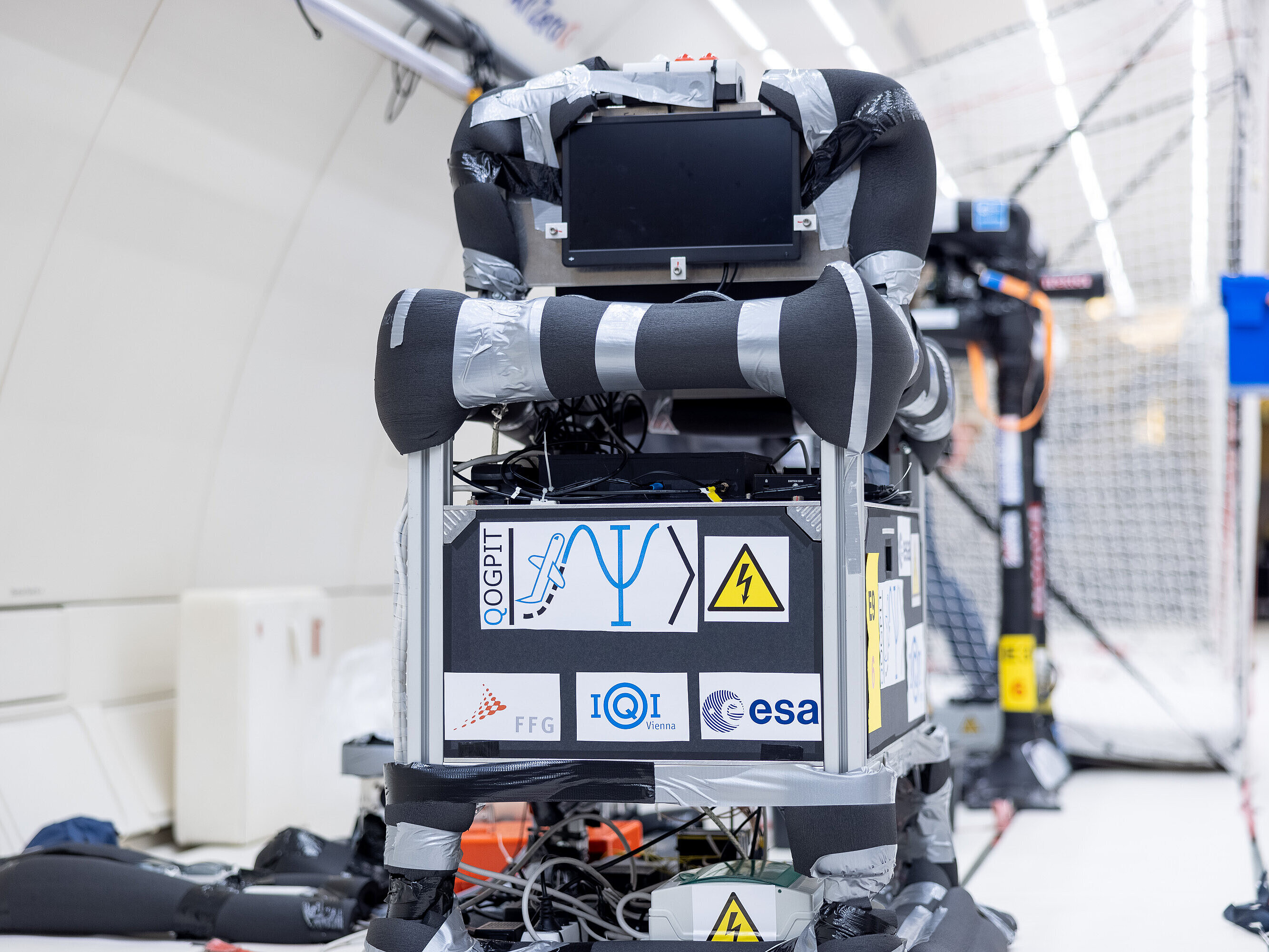During a parabolic flight maneuver of an airplane, the passengers are subjected to alternating phases where they experience heightened but also lowered g-forces, including weightlessness or “microgravity”. The team of scientists from the Austrian Academy of Sciences (OeAW) und TU Wien exploited these effects to test the influence of varying gravitational forces on a quantum system consisting of entangled photons. Their experiment was conducted on board of an airplane of the company Novespace that conducted the parabolic flight out of Bordeaux on behalf of the European Space Agency (ESA).
Extreme Conditions
“Even though quantum systems are very sensitive to external influences, remarkable progress in experimental techniques enables us to conduct challenging experiments also outside of the laboratory, and these experiments are even robust enough to withstand the extreme conditions during a parabolic flight", says Julius Bittermann of the Institute for Quantum Optics and Quantum Information of OeAW, who also works at the Institute for Atomic and Subatomic Physics (Atominstitut) at TU Wien.
The team’s experiment comprises a source for entangled photon pairs that are measured to assess the strength of the entanglement between the photons. “The entanglement of the photon pair means that the individual photons can only be fully described as parts of a larger quantum system. If we measure the photon polarisation, the probability to obtain one of the two possible outcomes, “horizontal” or “vertical”, is 50 percent each. But no matter which outcome we obtain for one of the photons, we then also know the result of the measurement of the other photon, because it always has the opposite polarisation in our entangled system”, says Bittermann.
Entanglement remains stable
With their experiment, the team wanted to test the influence of acceleration forces occurring during the parabolic flight on the sensitive correlations between photon pairs. “We lack a unified theory of quantum mechanics and general relativity, with the latter being our currently best description of gravity. This makes experiments that test the effects of non-inertial motion on quantum systems so interesting”, says Bittermann. The result of the experiment was, in this case, negative. Neither microgravity nor hypergravity (accelerations stronger than Earth’s acceleration), or the changes of acceleration between the corresponding phases of the flight had statistically significant effects on the quality of entanglement of the photons.
However, a positive result in this sense would have been quite shocking, and was definitely not what the scientists would have expected. “Our experiment delivers another reference point for studying the relation between acceleration forces and quantum systems. It shows that neither forces between 0 g and 1.8 g, nor the changes of acceleration between them have any influence on polarisation-entangled photons”, says Bittermann. In addition, the team from OeAW and TU Wien have provided further evidence that even very sensitive quantum technologies can nowadays be handled so well that they can be reliably operated outside of strictly controlled laboratory conditions.










